Have you heard about the Whole30? It was developed as a way to break food habits and reduce inflammation in the body by eliminating common culprits. So it’s both a diet reset and an elimination diet. It’s very popular, with a ton of followers. If you’ve wondered if the Whole 30 is right for you read on to learn about my experience.
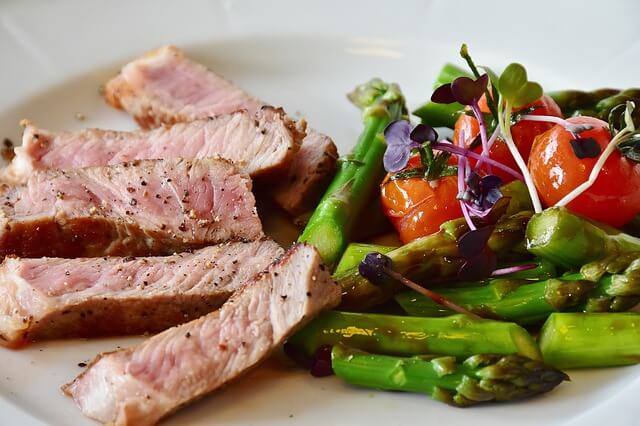
Photo from Pixabay
Before we go any further I must let you know that I’m not a nutritionist. My purpose is to give some background about Whole30 and describe my experience. You are encouraged to speak with a qualified health care professional for more in depth advice.
What are some of the benefits of Whole30?
As written the Whole30 is a very healthy way of eating, in my opinion, with an emphasis on whole ingredients. Like other diets and eating programs that have come before, the food industry is responding to its popularity…there are even products available in Walmart! Results will vary between individuals but many people report the following improvements (√ indicates my experience):
- less bloating (belly, feet/ankles, hands, face) √
- weight loss without exercise √
- clothes fit better with or without weight loss √
- improvement in sleep quality
- reduction/elimination of digestive issues √
- reduction/elimination of joint pain √
- improvement of skin tone and texture √
- improvement of skin issues like acne, hives, eczema and psoriasis
- fewer headaches and migraines
- reduction/elimination of medications for chronic conditions
- breaking food addictions √
This is why, despite being billed as an elimination diet or diet reset, many people stick with Whole 30 eating after they’ve completed their first round. From what I’ve read, a number of women with menstrual or menopausal symptoms claim improvements in hormonal issues like hot flashes and PMS after doing several rounds of Whole30.
I’ve seen people on Facebook talking about having Tiger Blood. What does that mean?
As may be expected, the Whole30 has its own lingo. Let’s define a few words and phrases you’ll run into:
- A 30 day period of strictly following the plan is referred to a “round“.
- You’ll see people referring to things like “R2D10″ which means Round 2, Day 10.
- Foods which meet the criteria of Whole30 eating are called “compliant.”
- The “Sugar Dragon” will roar when you stop eating its preferred sugar and simple carb foods.
- “Tiger Blood” is a feeling of well being and extra energy that may occur during the process.
- “Food Without Brakes” is anything that triggers uncontrollable eating.
- If you eat something that isn’t on the plan but technically compliant that’s SWIPO or “Sex with Your Pants On.” The idea is to follow the plan as laid out without the “cheats” that are common in low carb and paleo eating.
What are the goals of the Whole30?
Melissa Hartwig Urban, the developer of Whole30, says the process is an elimination diet which will help:
- Determine if certain foods are affecting your well being.
- Expose underlying issues in your relationship with food.
- Develop new food habits which will improve your overall health and well being.
- Correct hormonal issues that may be affecting appetite.
- Reintroduce foods after the 30 day period of abstinence in a controlled manner to see if any in particular are causing issues.
The ultimate goal is to reach Food Freedom, where you can make healthy food choices without the influence of underlying addictions.
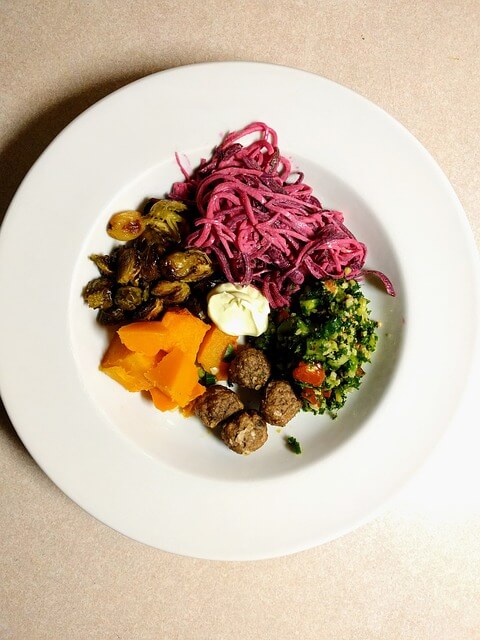
Photo from Pixabay
Is the Whole30 too restrictive?
I’m not going to lie. If you’re used to eating a lot of prepared foods at home or in a restaurant, you’re going to find this to be very restrictive. The following foods are not allowed:
- grains and products made from grains like pasta, bread, noodles, flours, etc
- legumes and products made from legumes like peanuts, beans, tofu and soy based products
- sweeteners of all kinds, including artificial sweeteners. Using fruit in a recipe for sweetness is allowed, within reason.
- certain preservatives used in processed foods like deli meats, sausages and bacon
- dairy products and items containing dairy, with the exception of ghee and clarified butter
- oils made from legumes and grains like soy or corn based vegetable oil and products that use them
- deep fried foods
- alcohol and foods made with alcohol (the exception is wine based vinegars)
- combining compliant ingredients to make something that would otherwise not be allowed. The example given was making pancakes from bananas and eggs. That would be SWIPO (see above).
In addition you are discouraged from weighing or measuring yourself during the period. Most important: If you break a rule you are supposed to start over from Day 1!
As far as the food goes, this is very similar to paleo and primal eating plans, in fact, many people turn to those eating styles after completing the Whole30. Despite allowing root veggies like potatoes, it’s also fairly low carb. It effectively eliminates most processed foods as well as common foods known to cause inflammation.
There’s still plenty to eat, and there is a basic Whole30 meal template (link downloads a PDF file) to help fill out a meal in a way that will keep you full between meals.
The biggest challenges for many people seem to be:
- While caffeinated beverages are allowed, you can’t use creamer or sweetener. If you don’t like your coffee black, this may be challenging.
- No sodas are allowed with the exception of unsweetened seltzers.
- It’s nearly impossible to find condiments that don’t have soybean oil, corn oil or some type of sugar in them. So you’ll either have to purchase substitutions or make your own salad dressing, mayo, ketchup, and cooking sauces.
- Snacking between meals is discouraged, although there are exceptions for nursing mothers and people who workout vigorously.
- It can be monotonous unless you’re willing to get creative.
Can plant forward eaters like flexitarians, vegetarians and vegans do a Whole30?
As a flexitarian I had no difficulty creating meals during the summer months. I did eat more meat than I normally would due to the rules regarding grains and beans. I upped my intake of not only veggies but fruits as well.
The needs of vegetarians and vegans are addressed in special chapters of It Starts With Food. In those cases certain forms of dairy and vegetable based proteins are allowed. The other rules remain the same. I refer you to the books for more information.
I found I enjoyed eating more fruits. I’ve never been a big fruit eater but a small portion helped keep my sugar dragon (aka sweet tooth) under control. It was easy enough to add a chopped apple to a salad or make a fruit salad from bananas, tangerines and pineapple. Allowing potatoes and other root vegetables also helped to keep my mood even.
Many people do several rounds of Whole 30 eating. Unless you have strong feelings or reasons to for not eating meat, eggs and dairy, my advice is to follow the rules as written for a single round. Then, once you’ve determined whether dairy, grains or legumes cause problems for you, you can figure out how and how much to incorporate into your eating plan.
How to prepare for the Whole 30
You can start the Whole30 right away if you want, but I think easing into it is a better way to go. Take a week or two to eat the non compliant but otherwise healthy food in the house. While you’re doing that wean yourself off sugar and creamer in your coffee/tea or cut back on the sodas. Caffeine and sugar withdrawal are brutal.
Take time to browse through Whole30 recipes download the Whole30 grocery list available here (this link will download a PDF file).
Read through the forums on the Whole30 website for recipes, helpful tips and support.
Join a couple of Whole30 Facebook or Reddit groups. Some are very tough love while others are more casual.
There are tons of Whole30 bloggers and instagrammers to follow for inspiration. Be aware many of them are Whole30-ish, so if it’s really important to you to follow the program as intended, I recommend relying on the official website and either purchasing the books or borrowing them from the library.
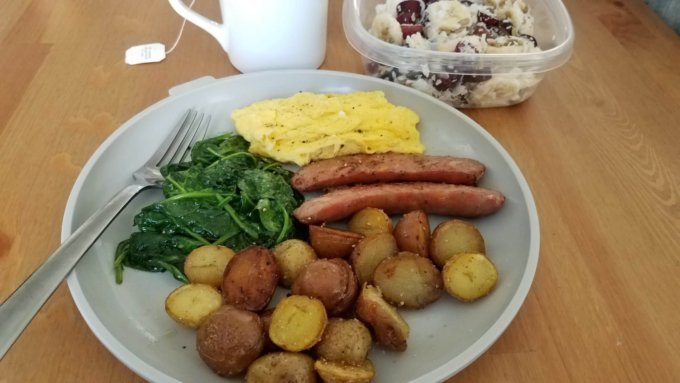
Fancy breakfast of chopped fruit with coconut, scrambled eggs, chicken sausage, spinach, roasted potatoes and a cup of black tea. The portions sizes got smaller as I continued the Whole30.
What can I expect while on the Whole30?
Depending on your current eating habits you may experience some mild to severe withdrawals for the first couple days to a week. The most common would be sugar and caffeine withdrawals but also from some types of dairy and other foods. Withdrawal can be very uncomfortable ranging from mild headache and nausea to full blown migraines and diarrhea.
Everyone will have a different experience. For me it was a relatively smooth transition as I weaned myself off of caffeine a long time ago. I substituted seltzer water for diet soda and only had mild stomach upset the first week as my gut chemistry changed.
Within a week my feet were noticeably less swollen and by the end of the 30 days my nagging knee and hip pain was gone.
When I tried to cut back on my servings of potatoes and fruits I got very irritable. Eventually I dropped the fruit to one serving a day, but had a small portion of some type of root vegetable at every meal.
Some people experience a surge of energy (called Tiger Blood) but I did not.

Even fancier meal with chicken, mayo, chopped avocado and tomatoes and broccoli. Seltzer to drink and a fruit cup.
My tips for managing a Whole30
You do not have to have special kitchen skills to be successful on this plan. There are some compliant foods that only need to be reheated. However, for most variety, you’ll want to do some cooking.
I didn’t meal plan, per se, but I had a list of meals I wanted to prepare and recipes I wanted to try. For the most part I ate like my parents did…meat, starch, veggies and fruit. Something fatty on my plate rounded out my meals instead of bread.
I prepared 3 or 4 days worth of meats (two proteins), plus hearty veggies (potatoes, brussels sprouts, broccoli, etc) and salads. The next time I went shopping, I’d buy two more proteins and swap out the veggies. Everything was packed separately in the fridge so I could mix and match for the meals.
My husband wasn’t really interested in the Whole30 so I ate my prepared food for breakfast and lunch and we worked together to make an evening meal we both could enjoy, like burgers. I’d chop my burger up over a salad and he’d eat his on a bun.
Snacking between meals is discouraged. In the beginning eat larger portions than you normally would. This will help keep you full between meals. After a week or so your body will coordinate with your eyes to give you perfect portions.
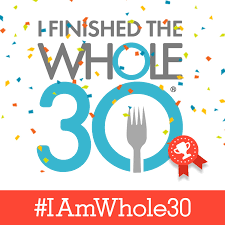
How To Reintroduce Foods
Once you’ve gone 30 consecutive days of compliant eating it’s time to reintroduce all the foods you’ve been avoiding. It’s important to work your way through the reintroduction period in a precise way. It will be very tempting to go out with your friends and eat nachos piled high with cheese and sour cream and wash them down with a margarita.
DON’T DO IT.
Here’s why: Of course you enjoyed your meal and the time with your friends but let’s say later on you developed some stomach cramps, which you haven’t had in several weeks. You will have no way to know which was the offending food. Was it the corn from the tortilla chips? The cheese and sour cream? Maybe the alcohol? There’s no telling.
You’ll find detailed instructions in It Starts With Food and even more discussion about reintroduction on the Whole30 website.
What Is Food Freedom?
Once you’ve completed a round of Whole30 and gone through the reintroduction phase you’ve not only reached food freedom, you’ve collected data to help you make lifestyle changes going forward.
Are you sleeping better? Have fewer aches and pains? Less swelling in hands and feet? Been awhile since you woke up with killer heartburn? Something or a combination of somethings was contributing to your condition and now you have information to prevent your problems from recurring.
You can choose to continue to eat the Whole30 way all the time if you like. Or you can relax a bit when among friends and family and eat what everyone else is eating. Between the online community and the Food Freedom Forever book you will have a lot of support as you move forward.
Final Thoughts on the Whole30
In my opinion the Whole30 is an excellent program to address our relationship with food and some of the underlying conditions food may cause to our health. While it may be difficult to abstain from some of our favorite foods, at the end of the process we’ll have plenty of feedback, good and bad, regarding the way the food we eat affects our bodies.
This process isn’t for everyone. In fact, several years ago I did a different type of elimination diet (read about it here) that wasn’t as restrictive but a little more complicated to execute. My results from the Whole30 just reinforced what I learned from previous experience.
I hope this post answers whether or not the Whole30 is right for you.
As a flexitarian I prefer to eat more plant based proteins so this will not be a full time eating style for me. However, I will tag compliant recipes with the Whole 30, Paleo and Primal tag.

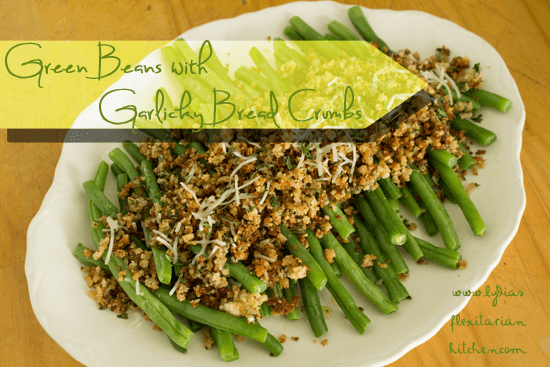
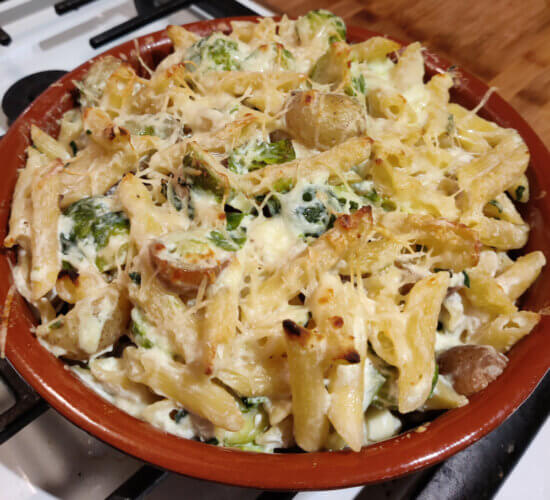
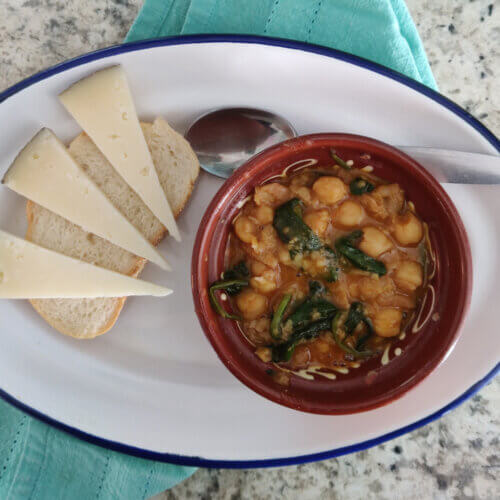
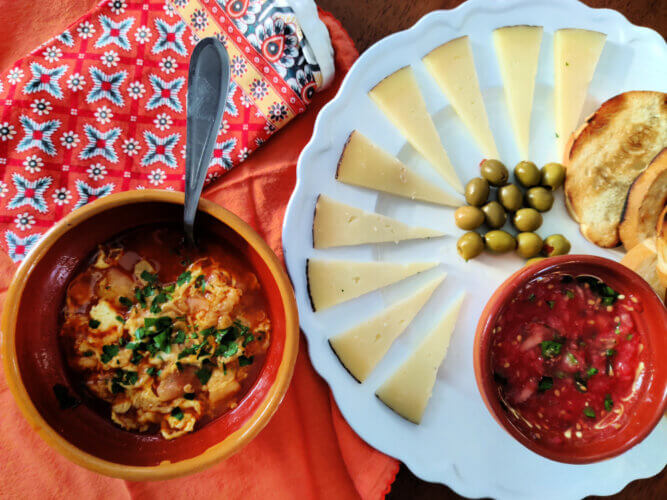
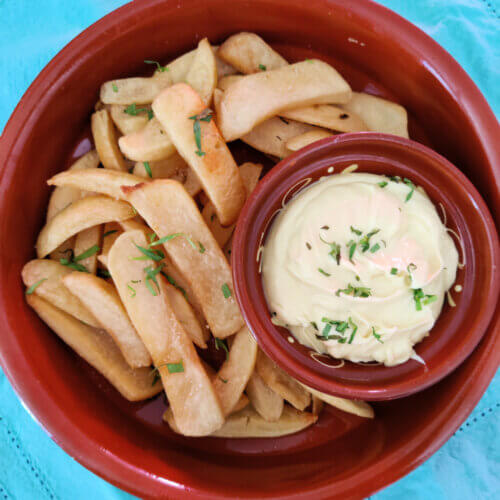
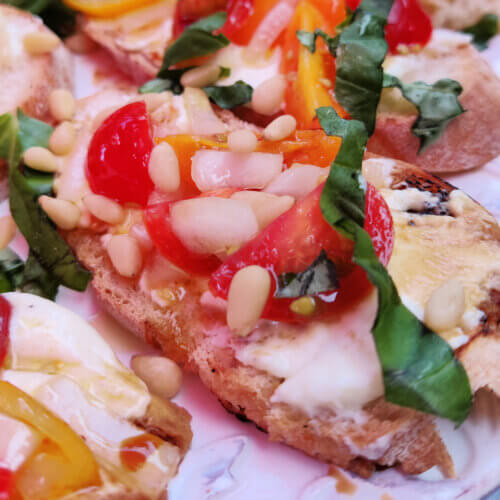
Leave a Reply